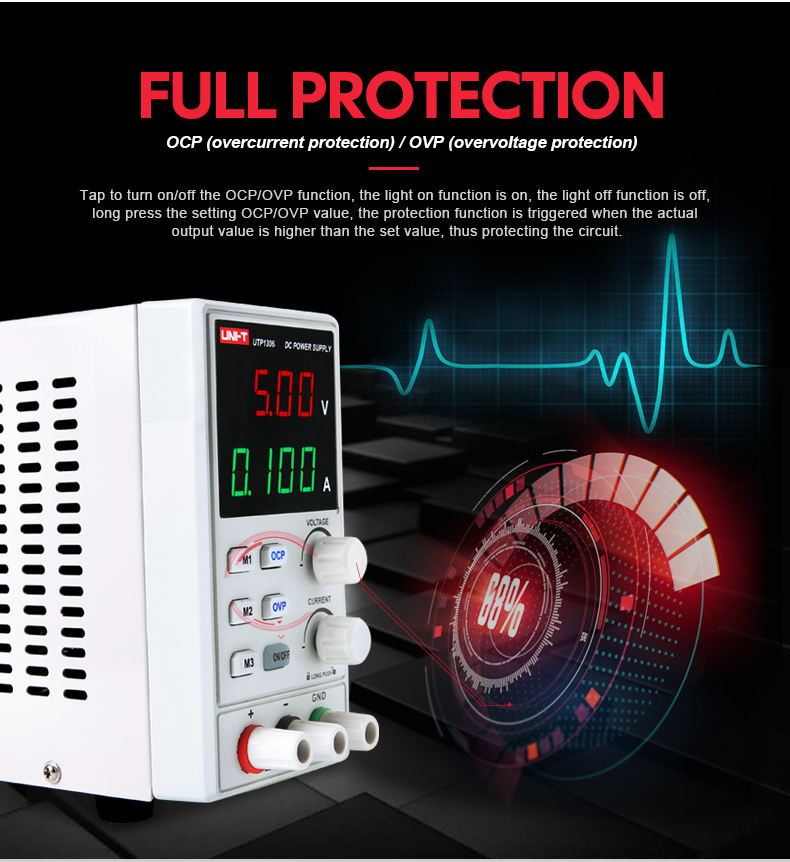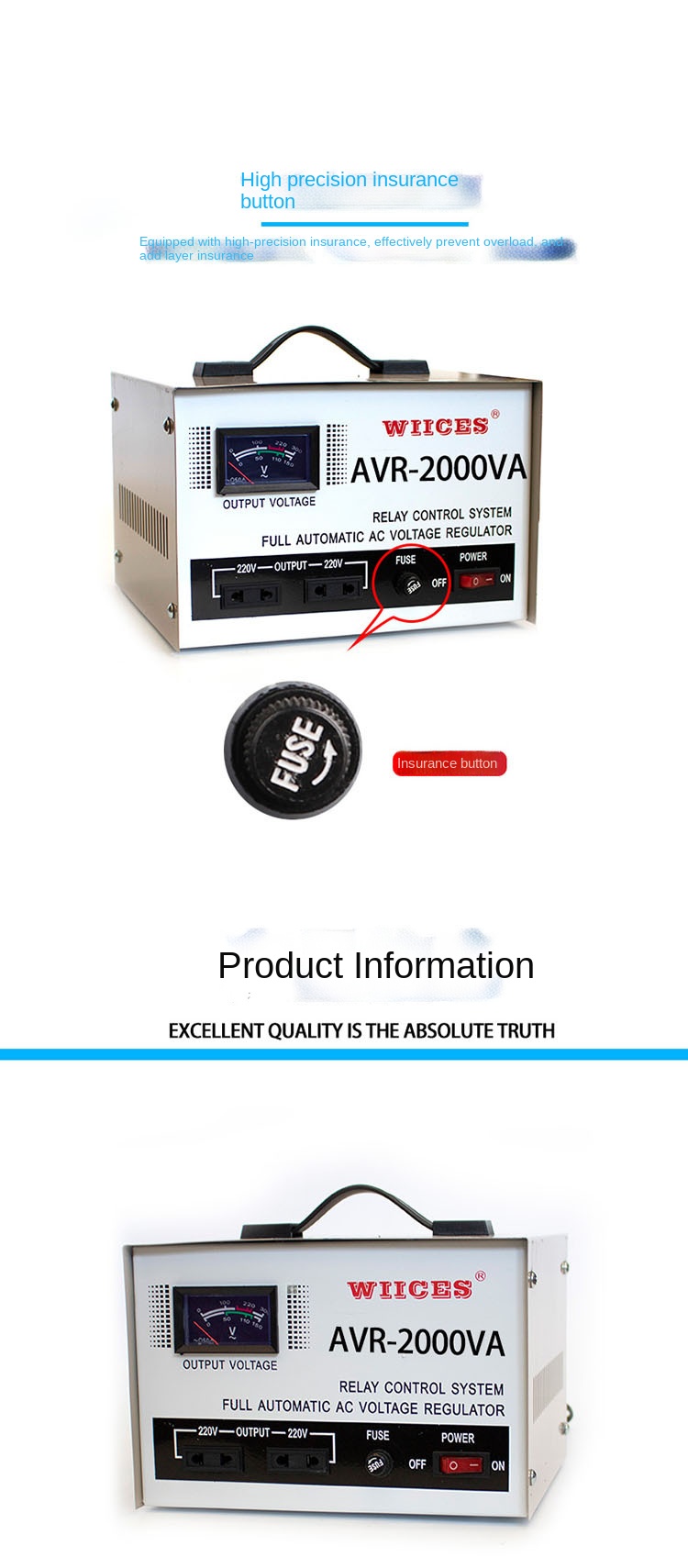Voltage Regulator
What is voltage regulator?
A voltage regulator is a circuit that creates and maintains a fixed output voltage, irrespective of changes to the input voltage or load conditions. This is an important component in many electronic devices, as it allows them to operate over a wide range of input voltages. The regulator monitors the input voltage and adjusts its output so that the voltage remains constant. This is beneficial for both the device and the user, as it prevents the device from overheating or becoming damaged, while also ensuring that the user does not have to constantly adjust the settings to accommodate different voltages.
A voltage regulator is a system designed to automatically maintain a constant voltage. A voltage regulator may use a simple feed-forward design or may include negative feedback. It may use an electromechanical mechanism, or electronic components. Depending on the design, it may be used to regulate one or more AC or DC voltages.
What is a Voltage Regulator - Another Teaching Moment | Digi-Key Electronics
Electronic voltage regulators are found in devices such as computer power supplies where they stabilize the DC voltages used by the processor and other elements. In automobile alternators and central power station generator plants, voltage regulators control the output of the plant. In an electric power distribution system, voltage regulators may be installed at a substation or along distribution lines so that all customers receive steady voltage independent of how much power is drawn from the line.
Circuit design for a simple electromechanical voltage regulator:
A voltage stabilizer using electromechanical relays for switching:
Today's Voltage Regulators - UNI-T UTP1306S Single-channel Switching DC Power Supply Stabilizer Voltage Regulator 32V/6A 4bits Display Laboratory Instrument:
Voltage regulator for sale
1. Linear Voltage Regulator
The LM317TG is a voltage regulator that is designed for linear operation. With a current rating of 2.2 amps and a voltage rating of 37 volts, it can be used in a wide range of applications. The TO-220 package makes it easy to install, and the three-pin design ensures compatibility with a variety of circuits.
If you're in the market for a voltage regulator, you'll want to check out this L7806CV linear voltage regulator IC! This chip can handle up to 1.5 amps of current at 6 volts, making it perfect for a variety of power applications. It comes in a TO-22 package, so it's easy to work with and fits easily into your project. Best of all, it's available at an amazing price!
2. REGULATOR ELECTRIC REGULATORS 220VAC
In today's world, it is important to have a voltage stabilizer to ensure a consistent flow of electricity. This is especially important for televisions, refrigerators, and other appliances that are used on a daily basis. Without a voltage stabilizer, these appliances could become damaged as a result of inconsistent power flow.
Fortunately, there are many voltage stabilizers on the market that can meet the needs of homeowners. One option is an AC voltage stabilizer 220v fully automatic household single-phase TV refrigerator voltage stabilizer power transformer. This type of voltage regulator is designed to provide consistent power to a range of appliances, including televisions, refrigerators, washers, and dryers. It is also capable of regulating power flows up to 220 volts.
Another option for homeowners is the Tripp Lite LC 1800 Voltage Regulator.
3. Voltage regulator - Other types
The types of voltage regulators in the world of electronic engineering are very diverse and rich. For example:
- 6V, 5.5A Step-Down Voltage Regulator D36V50F6
- Single-phase Voltage Regulator 1000W Input 220v Adjustable 0-300V AC Boost Voltage And Buck Voltage Power Supply 1KVA APS-1001D
- SVR-500 Automatic Voltage Regulator with Built-in 110v- 240v Up Down Voltage Transformer - 500 Watt
- UNI-T UTP1306S Single-channel Switching DC Power Supply Stabilizer Voltage Regulator 32V/6A 4bits Display Laboratory Instrument
- And more...
 |
| Voltage regulators for sale are plentiful on the e-commerce market |
Learn more: Voltage regulator - Other types
The voltage regulator is a device that is used to maintain a desired voltage level in an electronic circuit. The type of voltage regulator that is used in a particular circuit depends on the needs of the circuit. There are many different types of voltage regulators available on the market, and each has its own advantages and disadvantages.
One type of voltage regulator is the linear regulator. A linear regulator uses transistors to maintain a constant voltage level. It is a simple device, and it is easy to use and to understand. However, it can be slow to respond to changes in the input voltage, and it can also produce a lot of heat.
Another type of voltage regulator is the switching regulator. A switching regulator uses transistors to switch between two or more voltages levels in order to maintain a constant output voltage.
Gift for you:
۞ Generate electricity to power your home with just a battery or phone charger
۞ The Square Pulse Generator controls the power generation on demand
❉ Free Energy from Nikola Tesla's friend: Alfred M. Hubbard's Free Energy Transformer | Charge your phone to power your home! A step-by-step guide to making a "Free Energy Transformer" by Alfred M. HUBBARD | Ether Technology was suppressed in the 1920s
❉ How to make free electricity simpler for anyone: Free Energy Transformer
Revealed At Last: Ancient Invention Generates Energy-On-Demand
✔ Nikola Tesla’s method of magnifying electric power by neutralizing the magnetic counter-forces in an electric generator
Generates Energy-On-Demand: Easy Power Plan Will Change Our World Forever
✔ Combination of induction motor and alternator
✔ Combine generators with induction motors - self-powered generators with rotary motion
✔ Various methods of generating high power immobile generators
✔ Or maybe called Overunity for the system. Mother Nature doesn't care about people calling or naming phenomena. Overunity or Free Energy, or Zero Point Energy (ZPE) are just a few different words






Post a Comment